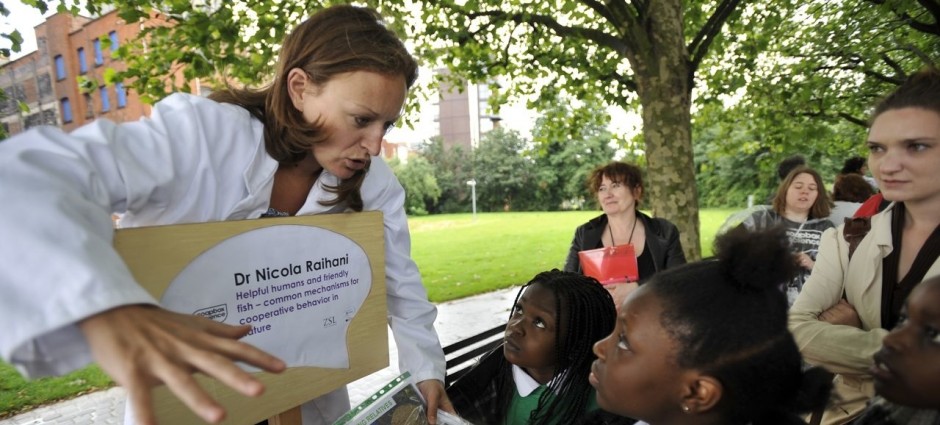 Nicola Smyllie is currently a post-doctoral neuroscientist working at the MRC Laboratory of Molecular Biology, where she also did her PhD. Here she tell Soapbox Science how she loves seeing the circadian rhythms in brain tissue and that she believes passionately that we need to encourage more girls to consider a career in science. Nicola will be talking about “Body clocks: rhythm of life” in Cambridge Market Square on 2nd July 12-3pm.
Nicola Smyllie is currently a post-doctoral neuroscientist working at the MRC Laboratory of Molecular Biology, where she also did her PhD. Here she tell Soapbox Science how she loves seeing the circadian rhythms in brain tissue and that she believes passionately that we need to encourage more girls to consider a career in science. Nicola will be talking about “Body clocks: rhythm of life” in Cambridge Market Square on 2nd July 12-3pm.
SS: Nicola, how did you get your current position?
NS: I did a bachelors degree in biochemistry at the University of Bristol. As part of the degree, I spent a year on an industrial placement in a drug assay development team. I loved being in the lab and being able to design my own experiments. It was here that I decided that I definitely wanted to pursue a career as a research scientist, and decided to do a PhD. It was hard to narrow down what I wanted to research, and I ended up applying for an array of different PhD projects. The project that really jumped out at me, however, was about the control of circadian rhythms by the brain, based at the MRC Laboratory of Molecular Biology, in Cambridge. At the time I had very little neuroscience experience, but I put in the application anyway as “you don’t know unless you try.” Fortunately, I got accepted on to the PhD programme and went on to successfully complete my PhD, two years ago. Since then, have continued on as post-doctoral researcher in the same laboratory.
SS: What, or who, inspired you to get a career in science?
NS: My parents encouraged my brother and me a lot, and often bought us books on science and nature. When I was at school, I always loved science classes, especially biology and chemistry. I had some very good teachers, who definitely played a part in my path into a scientific career.
SS: What is the most fascinating aspect of your research/work?
NS: My work is very visual and I still find it amazing being able to actually see circadian rhythms in brain tissue and watch them evolve over time.
SS: What attracted you to Soapbox Science in the first place?
NS: I feel very passionately that we need more gender equality in STEM careers. Part of this is being role models for the next generation, encouraging more girls to consider a career in the sciences. Gender bias happens at really early age: pink for girls; blue for boys; princesses for girls; doctors/adventurers for boys. This has a massive impact on how children view how they fit into the world. Thus, I think it’s important for female scientists to get out there and show little girls that women can do amazing and exciting things with their careers.
SS: Sum up in one word your expectations for the day – excitement? Fear? Thrill? Anticipation?
NS: Hope! My word is hope because I hope that I can share with people how and why I find my research interesting and exciting as well as inspiring the next generation.
SS: If you could change one thing about the scientific culture right now, what would it be?
NS: In an ideal world, there should be more openness between scientists. Often, in part due to the way science is funded, scientists can be reluctant to share data until they are ready to formally publish it, as a complete study. This is because scientific funding often depends on having a good publication record. This can result in science not always being carried out in the most efficient way, whereas instead there should be more emphasis on doing collaborative research.
SS: What would be your top recommendation to a female PhD student considering pursuing a career in academia?
NS: I would say that you need to be determined and patient to be an academic, but most of all you need to be passionate about your research.
